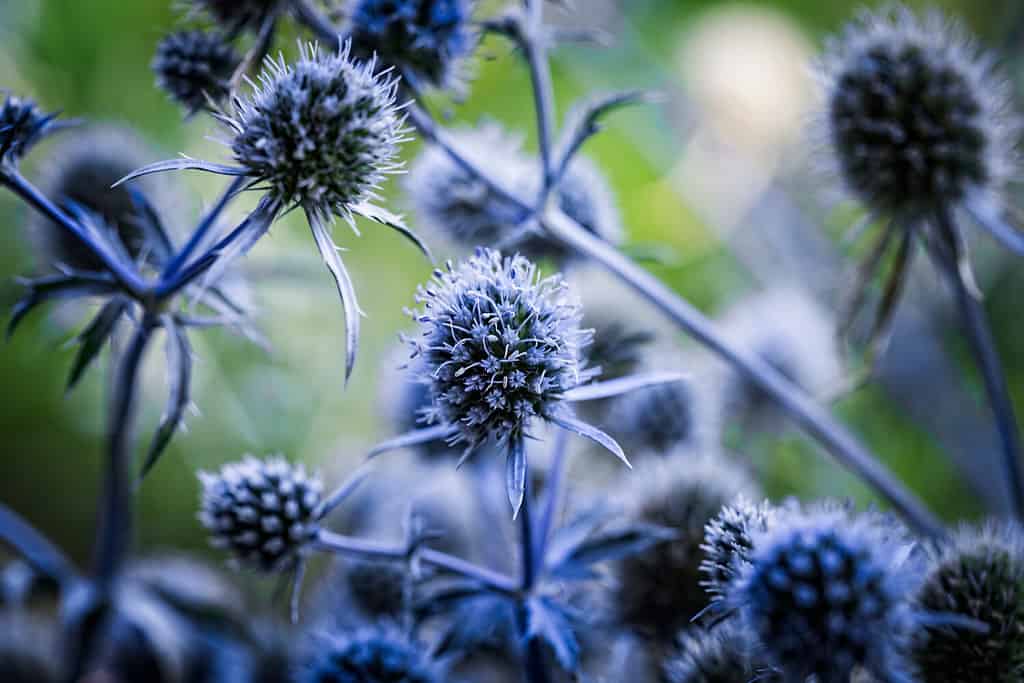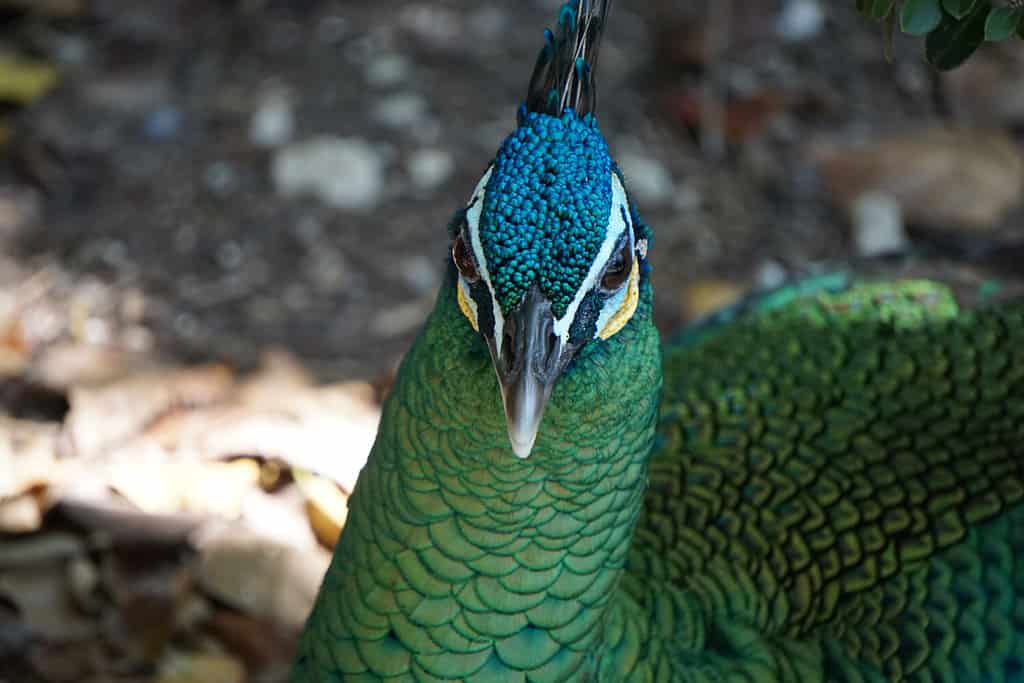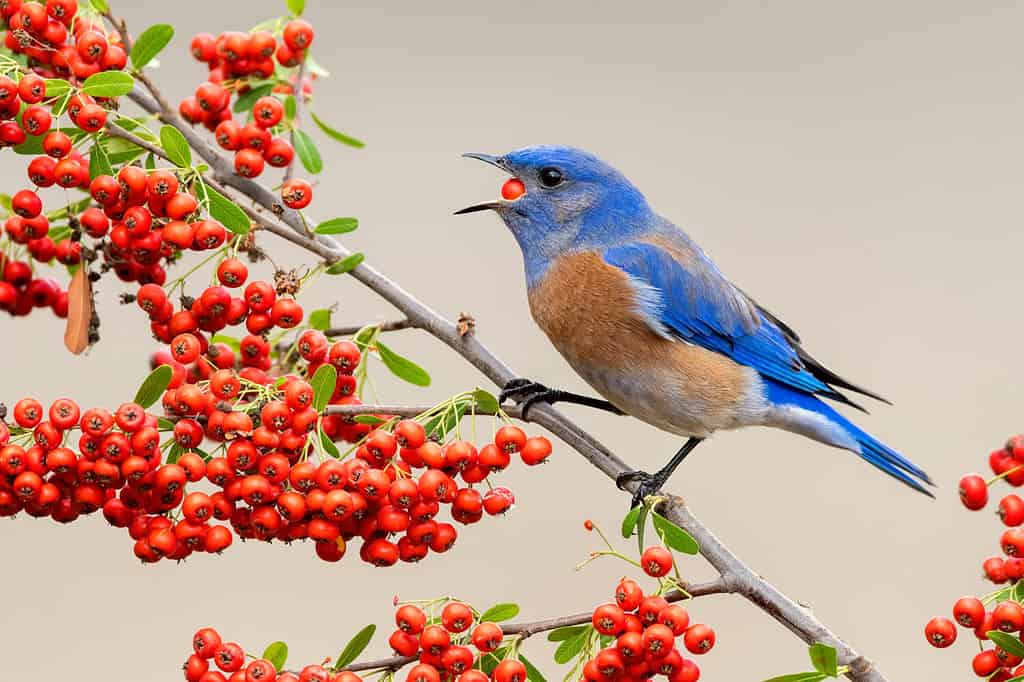Would it surprise you to hear that the majority of blue animals and plants you see aren’t blue? Well, that isn’t entirely true. At the least, they aren’t usually real blue pigments. Instead, most blue colors that you see in nature occur from optical illusions or chemical reactions to produce a blue appearance.
Why Is Blue a Rare Color in Nature?
As a pigment, blue is incredibly rare in nature. There are technically only a few large-scale organisms that produce their blue pigments, such as the rare obrina olivewing butterfly. Aside from rare cases like this, most other blue animals and plants use other strategies to appear blue, such as structural coloration.
Blue is Rare in Plants

Blue is usually an incredibly expensive pigment that is hard to maintain. For this reason, most plants stick to making “cheaper” colors like orange and creed.
©Kateryna Mashkevych/Shutterstock.com
One of the main reasons why blue is rare in nature is that it is rarely produced among plants. Many blue pigments aren’t steadfast and stable, which causes them to easily dissociate. When plants create blue pigment, they simply can’t keep it for long before it decays into another compound. For this reason, many plants opt for pigments that are easily renewable and stable, such as carotenoids.
Animals survive and create compounds from materials that they eat, which are often plants. Thus, since most plants don’t contain blue pigments, most animals don’t receive the chemicals needed to produce them either.
One great example to describe this phenomenon is flamingos. They are born with semi-gray feathers, which only turn pink after they begin to eat copious amounts of shrimp, which contain pink pigments. If they were to never eat shrimp, they would never develop the gorgeous color pink that we associate with them!
Blue Can Be an Expensive Pigment
Blue pigments are also thought to be chemically and biologically expensive for animals to upkeep. In other words, the cost of producing and maintaining these pigments outweighs the benefits animals would receive from them. This is just one of the many reasons why blue is one of the rarest colors in nature.
Many pigments involve the incorporation of metals such as cobalt and iron to be functional and stable. In some cases, especially in environments where these are not abundant, creating and maintaining blue pigment, especially in multiple tissues can be challenging. Likewise, blue pigment can be biologically expensive to produce. The cellular energy required to create blue pigment from basic molecules may not be worthwhile to use.
Looking Blue Without Pigments
As mentioned earlier, some animals and plants can get past the previously discussed challenges to look blue. Let’s take a peek at what specific methods they use to appear blue without any true pigment!
Structural Coloration

Peacocks are known for their showy plumage, which is actually used to attract females and take attention away from defenseless young!
©E Thomas/Shutterstock.com
Structural coloration is a very common form of coloration that causes animals to appear blue. It is extremely common amongst birds, which use it to produce stunning blue feathers. One great example is peacock feathers, which are prized for their metallic blue-green hues.
Structural coloration relies on the presence of microscopic structures on the surface of whatever part is supposed to appear blue. For birds that may be feathers, for plants, it may be flower petals.
These microscopic structures appear like miniature towers clustered tightly together. When light hits them at the right angle, it works to constructively enhance the appearance of blue light, while destructively lessening the appearance of red light.
This strategy only works when light is hitting the structure at the perfect angle. Thus, it often causes the blue to shimmer as light moves across the structural coloration.
Chemical Reactions
Some organisms (usually plants) can maintain a blue color through some form of chemical reaction or process. Anthocyanin is a common pigment found throughout the plant world. It is associated with red, brown, and black hues mainly.
Interestingly, anthocyanin is reactive to environmental conditions such as pH. Under acidic conditions, it appears red, however, when it is in basic conditions, it turns blue. Thus, some plants like hydrangeas can alter their foliage or flowers to turn blue when growing in alkaline soil. Furthermore, under basic conditions, some organisms are also able to uptake and use metals such as aluminum more readily. This can allow them to also create and maintain additional blue pigments.
The Tyndall Effect
One last way that some animals appear blue is through a chemical phenomenon known as the Tyndall effect. This effect is created when light passes through an object that is colloidal, meaning that it is made up of multiple dimensions, such as fog floating in the air.
When light passes through or across some objects (such as bird wings that have special barbs) it can scatter and create a blue appearance. For example, this effect is most notably seen in blue jay wings.
4 Places Where You’ll See Blue in Nature

Birds are one of the ain animal groups that appear blue, even if it usually occurs without true pigment.
©Agami Photo Agency/Shutterstock.com
Even though blue is the rarest color in nature, there are still places where you can see it. Let’s discuss some of the most striking blue things in nature!
Lapis Lazuli
Lapis lazuli is the only mineral in nature that can be used to produce a blue pigment. It can be used to synthesize ultramarine, which is one of the only natural blue pigments in the world.
Obrina Olivewing Butterfly
As mentioned earlier, the obrina olivewing butterfly is one of the very few animals that can produce blue pigments. It has two extremely bright wing bars that are almost neon. It creates this color with a pigment called pterobilin. There are also some other butterflies in the same taxonomic group that produce other blue wings with this same pigment!
Birds
Many birds produce some form of blue coloration, usually in their major flight or body contour feathers. As previously mentioned, their blue color usually comes from structural coloration or the Tyndall effect. Some common birds that are blue include:
- Peacocks
- Tree Swallows
- Bluebirds
- Stellar’s Jay
- Indigo Bunting
Indigo Dye
Although it technically isn’t naturally occurring, indigo dye is another source of blue that can be isolated from natural sources. It originates from the indigo plant and the dye-making process is usually long and tedious. Interestingly enough, throughout the process, the indigo dye usually doesn’t look blue until the final step, when oxidation occurs.
The photo featured at the top of this post is © Silvio Ligutti/Shutterstock.com
Thank you for reading! Have some feedback for us? Contact the AZ Animals editorial team.







